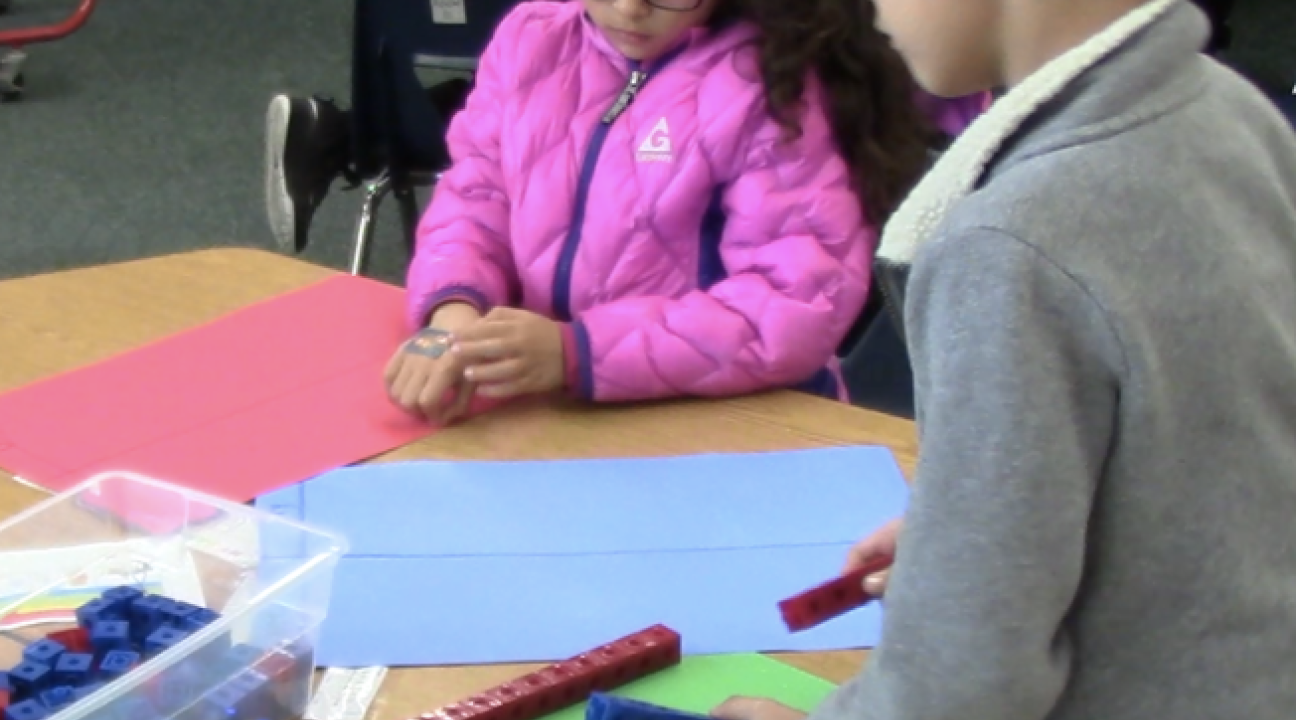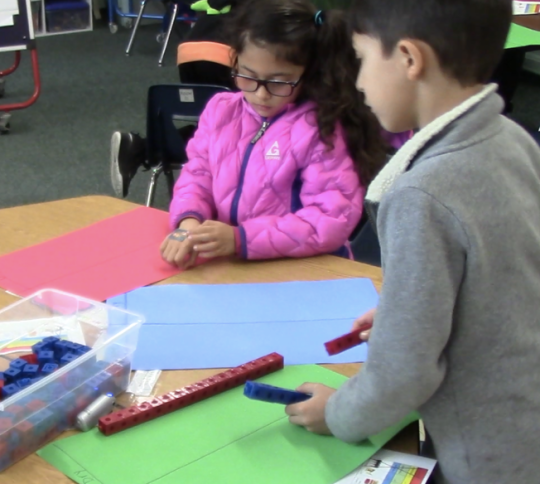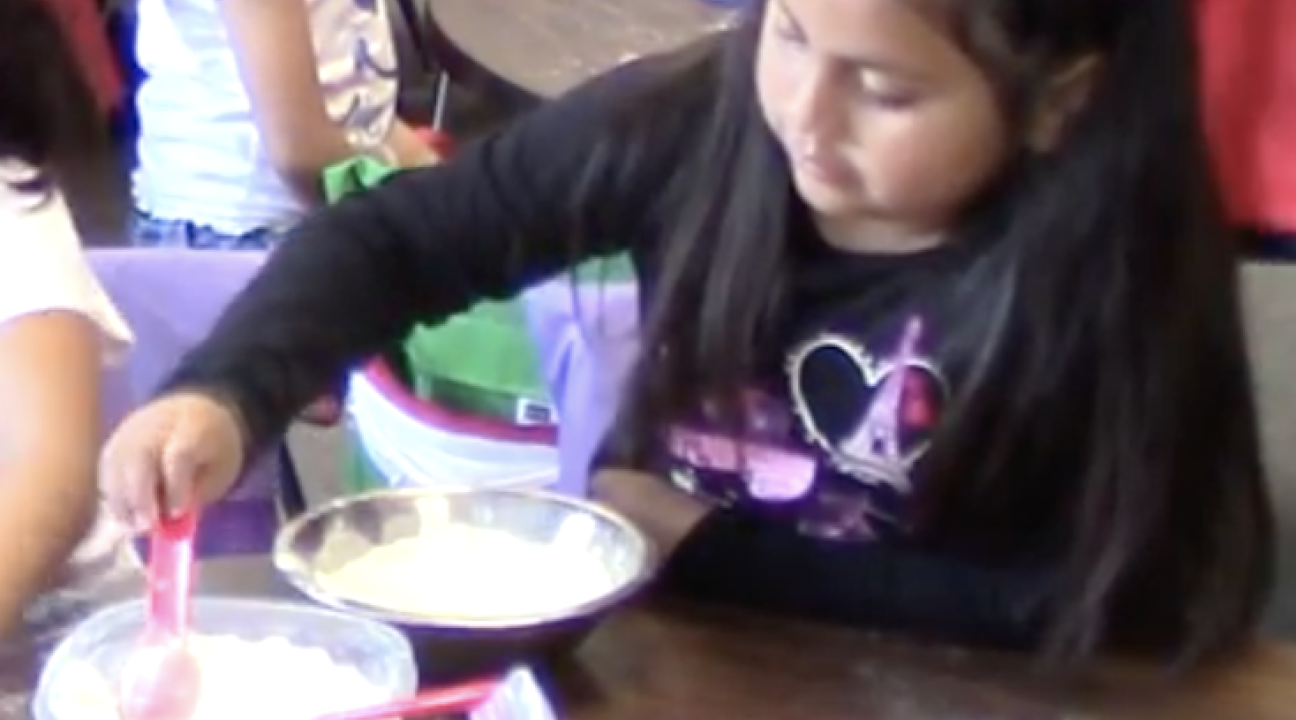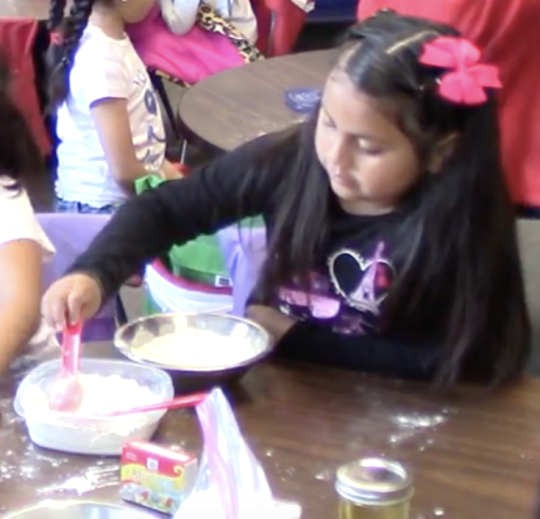Make a Better Playdough
Follow recipe, counting out tablespoons, to make 3 batches of playdough. Count, measure, attend to precision.
Cycle Type
Embedded Math
This is the Embedded Math cycle type. Cycle types used to organize cycles by categories.
Maker Mindset
In maker tasks, students are invested in what they create, are interested in using what they’ve created, and in learning what classmates have created. This should be true in both making and in mathematics.
Makers are curious. They notice how things work and wonder “what will happen if …”. The same outlook opens new doors into mathematics. Noticing the structure of mathematical objects and wondering what will happen if you change terms or parameters opens avenues into finding solutions or building a mathematical model.
Maker tasks encourage trying out design ideas early to see if they are feasible. If they work, they are revised and improved upon. If they don’t, they are replaced by new ideas quickly without losing too much time pursuing dead-ends. This habit of mind also applies to mathematics. While solving math problems, students should test their ideas early. Will an idea lead to answers that is reasonable rather than too big or too small? If we are writing a general expression or equation, does it work for small cases? Can we tell without solving if a solution will be positive or negative?
CC Standards:
K.CC.3, K.CC.4a, K.CC.6, K.CC.7, K.MD.2, SMP 5, SMP 6
You can find descriptions of all common core math standards at Common Core Math Standards
Over the course of 3 class periods of roughly 35 minutes each, students will use and enhance their counting and measuring skills to make 3 batches of playdough. The challenge concludes with students taking the least successful batch, and trying to strategically improve it by adding a specific number of Tablespoons of one or more ingredients based on their observations.
This lesson provides a real-life context to build upon students’ growing capacity to count within 20. It also supports the development of foundational ideas in measurement including the importance of iterating a standard unit. Standard for Mathematical Practice #5 — Use Appropriate Tools Strategically, and SMP #6 — Attending to Precision are focal. The lesson cycle concludes with an opportunity for students to explore realistic numbers beyond 20 and the foundational computation concept that many small numbers can be put together in order to make a larger number.
Prior Experience:
- Counting: This learning cycle would be best after a few months of school when most students are meaningfully counting within 20 (beyond rote counting) and are becoming comfortable exploring numbers beyond 20. Students should have experience “counting on” from a given number. (Note: the standards call for proficiency within 20 by year’s end, but that does not mean counting should stop at 20 until students have mastery. Rather, real proficiency within 20 entails exploring numbers beyond without an expectation of mastering those.)
- Measuring: Experience measuring using standard kitchen measuring tools is useful but not essential.
Materials and their distribution are planned with the idea students would work in pairs at tables for 4. Table groups share containers of playdough ingredients that are ready for easy distribution and storage and have slightly more than needed. This minimizes mess and waste while enabling students to realistically scoop from containers that do not contain the exact amount they need. If your tables hold more than 2 pairs, some adjustments may be necessary.
| Material | Quantity |
|---|---|
| Recommended - butcher paper, washable table cloths, newspaper, etc. to cover tables amd help with clean up | 1 per table |
| Recommended - Tray or tub to convey materials | 1 per table |
| Recommended - Rags or washrag for cleanup | 1 per pair |
| 4-color set of food color | 1 per table |
| Sharpie marker | 1 per table |
| Set of sage delivery cards pre-cut and paperclipped | 1 per table |
| Packet of color coded recipe cards (could be laminated for future use) | 1 per pair |
| Clipboard | 1 per pair |
| Data calculation sheets | 1 complete set per table |
| Silicone mixing spoon | 1 per pair |
| Measuring tablespoon | 1 per pair |
| 1.5 or 2 quart metal mixing bowl | 1 per pair |
| Quart-size zip-top bags | 3 per pair |
| Flour in labeled tupperware style container or bowl | 8 cups for 2 pairs, 12 cups for 3 pairs |
| Salt in labeled tupperware style container or bowl | 2 cups for 2 pairs, 3 cups for 3 pairs |
| Vegetable oil in labeled tupperware style container or bowl | 1 cupr for 2 or 3 pairs |
| Water in labeled tupperware style container or bowl | 6 ups for 2 or 3 pairs |
| Linking cuves or Unifix cubes | 40 per pair (ideally 16+ of one color and a few other colors) |
Note: You may want to inform parents ahead of time that students may get messy and that they are likely to have their hands stained with food coloring.
Lessons:
Learning Cycle Wrapup:
Conclude the lesson with a whole class discussion in which the students talk about what they learned. Prompts may include:
- What did you learn about measuring?
- What did you learn about attending to precision?
- How did your estimates compare with your actual number of spoonfuls in your revised playdough? How did your results come out? What would you do differently?
- How did you handle counting larger numbers? What strategies did you get to practice?
- How did you and your partner work together?
- What did you learn about playdough and how to make it?
This is also a time when the teacher can share his/her observations about what students were doing and how they were improving. Highlights might include projecting digital photos of students while they worked, showing better measuring techniques, counting strategies observed, use of comparison language, recording numbers, etc.
Highlight for students how the lesson cycle helped them learn a few new things and get better at (practice) many things they had done before.
Highlight their growth in important mathematical practices.
Ask students how making playdough connects with other things they like to make, and reflect upon the process of revising something that you’ve made that didn’t turn out well.
Wrap up the cycle by letting students know that you will share the recipes with them and their family (e.g., in the class newsletter or website) and that they can make more at home and teach their families how to make playdough using 4 simple ingredients.
Assessment
Assessment for this lesson cycle is formative. Throughout the teacher should be making note of students’ growth in the following:
- SMP 5: Do students improve in their use of Tablespoons and their understanding of Tablespoons as a standardized measure, learning to level each spoonful so that the same amount is used each time they make a spoonful? (Note – there are connections here to conservation concepts as well.)
- SMP 6: Are students improving throughout the lesson in working with their partners to count and measure carefully? Are they consistently using one-to-one correspondence?
For Math Content Standards:
Are students demonstrating increasing capacity to count accurately up to and beyond 20? Are they improving at “counting on”? Are they able to read and write those numbers? Are they able to compare quantities using more and less than ideas? Are they able to move between concrete, symbolic, and abstract uses of numbers?
If a more formal assessment is called for, students could work with the original Blue Playdough recipe and compute the wet total Tablespoons, dry total Tablespoons, and recipe totals Tablespoons independently to see how they are progressing.







